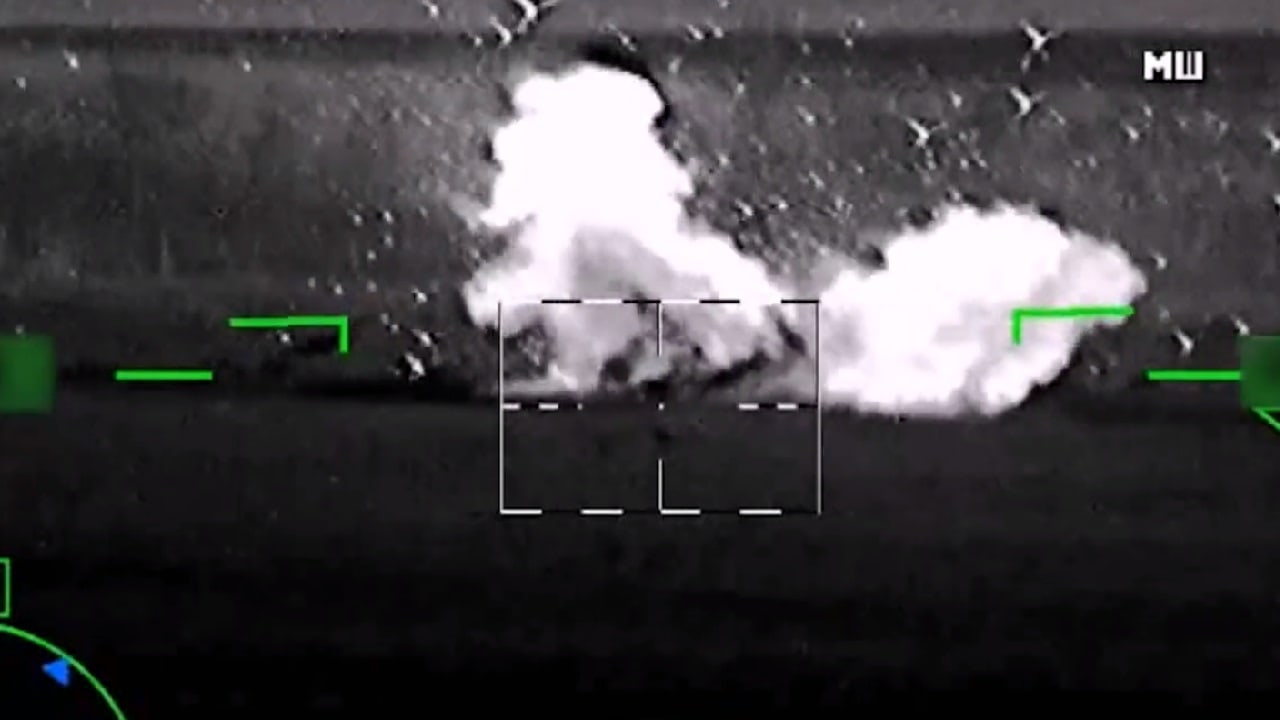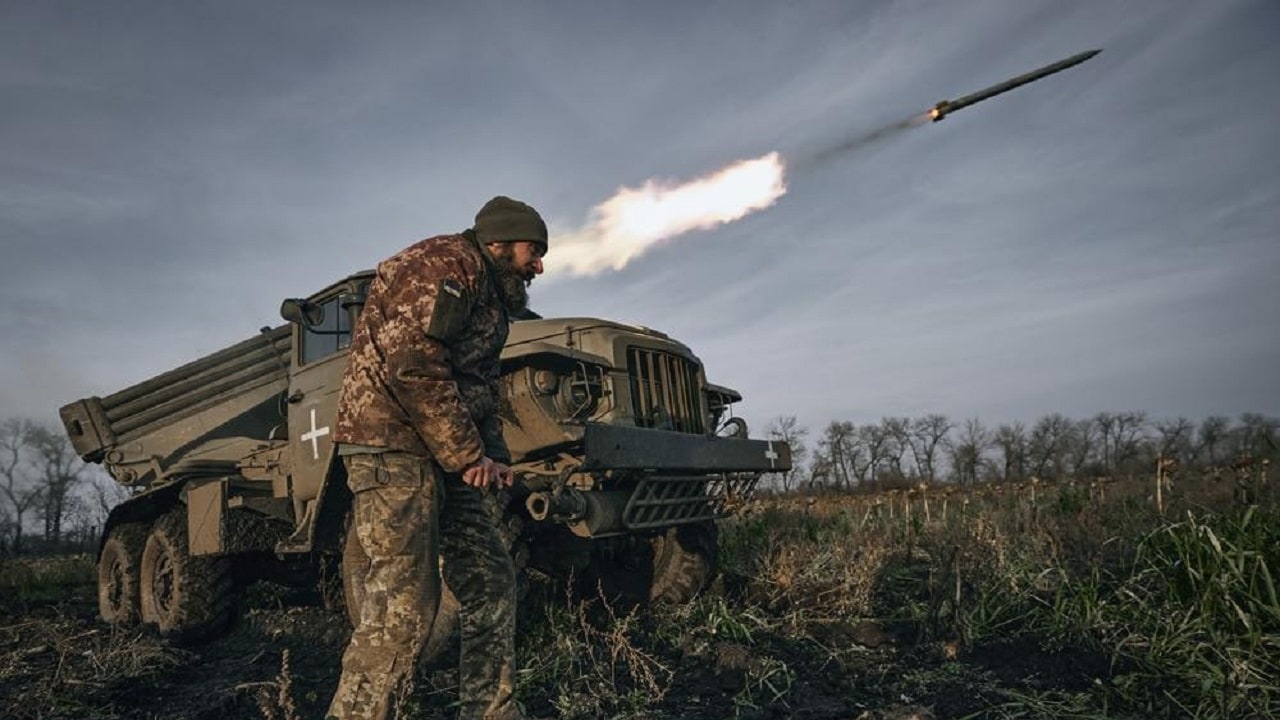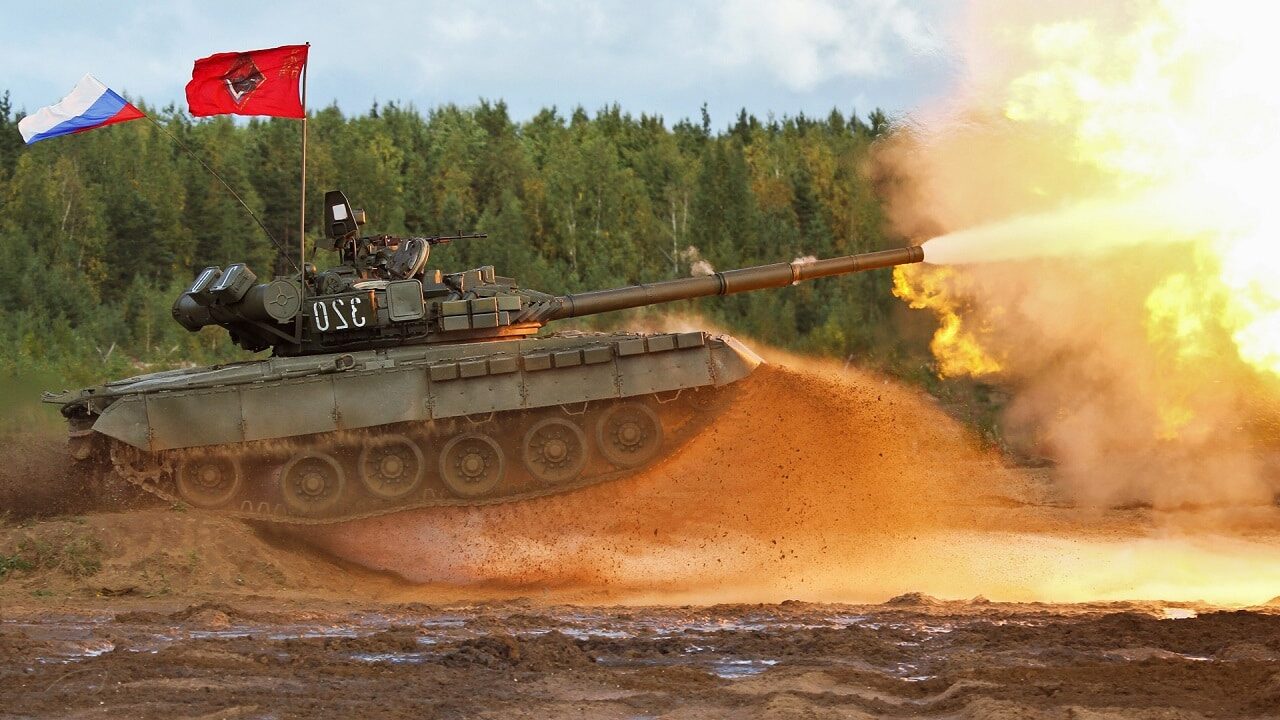At the start of the Russia-Ukraine war in 2022, President Joe Biden declared America would support Ukraine “for as long as it takes,” and he declared that such support would leave “Russia weaker and the rest of the world stronger.” Three years later, however, as President-elect Donald Trump prepares to reenter the White House, it is becoming painfully obvious that the policies Biden employed produced nearly the opposite outcome.
Instead of imposing a strategic defeat on Moscow and a victory for Kyiv, Ukraine is at real risk of suffering an outright military defeat.
Last September, after sending Ukraine thousands of American combat vehicles, millions of rounds of ammunition, and over $100 billion in U.S. taxpayer dollars, U.S. Air Force General James Heckler admitted that despite such extraordinary expenditures, the Russian military had become bigger, stronger, and more capable than it was in 2022. That is an astounding confession. It is also unsurprising.
It is not merely important, but a paramount obligation for any American president to soberly assess any situation from the framework of “ends and means.” It is not enough to merely state a preferred outcome – “weakening Russia” in this case – but to make certain we have the means to bring that end to successful fruition.
Clearly, the Biden Administration never conducted such an assessment, choosing instead to lead with emotion, anchoring American interests to the unsubstantiated hope that something good would result. It should have been obvious to senior Administration officials from the outset that Russia had an overwhelming advantage over Ukraine in the key metrics that determines a nation’s war-making capacity.
Russia had millions more men from which to mobilize or recruit into its Armed Forces than Ukraine. It had enormous quantities of natural resources within its borders, and perhaps most crucially, a defense industrial base to indefinitely maintain production of all war material necessary to sustain a war of attrition. Ukraine has comparative deficiencies in all such categories.
Further, when Biden first committed the United States to open-ended support to Ukraine, Russia had a lukewarm relationship with China and was at arm’s length from North Korea and Iran. Today, China and Russia have a stronger military relationship than before, as well as an advanced economic interdependency.
Worse for American interests, Russia now has outright military alliances with both North Korea and Iran. None of these developments are good for America’s global interests. It didn’t need to be this way. There were alternatives available, at several different stages, that could have benefitted American national interests and helped to preserve Ukrainian lives and political independence.
Biden punted at each moment of opportunity, refusing to take either preventative measure that might have avoided war or multiple off-ramps that could have ended the war and limited the damage to U.S. and Ukrainian national interests.
First, the war should never have happened. Biden was given a golden opportunity to prevent war in the autumn of 2021. Almost a year into the war, then-NATO Secretary General Jens Stoltenberg admitted that almost six months before the outbreak of war, Putin privately sent a proposed treaty to NATO that would have declared neutrality for Ukraine by vowing not to expand NATO further. Stoltenberg seemed to brag about rejecting this opportunity to avert war, confirming that Putin promised such a declaration would be “a pre-condition to not invade Ukraine. Of course, we didn’t sign that.”
And of course, war did come.
Regarding hypothetical NATO membership for Ukraine, it is vital for every American to understand the truth: Ukraine was never going to be invited by the Alliance. They were the most corrupt country in Europe at the time. They had an active civil war that had been simmering for eight years, with no resolution in site. There was considerable enmity between Ukraine and Russia that would keep relations unstable and volatile for the foreseeable future.
What NATO country in its right mind would willingly place its own national security at risk by tying itself to an Article 5 guarantee that could see it plunged into war against a nuclear-armed Russian state? None. But arrogance and an emotional desire to “look tough” against Russia led Biden and NATO to continue claiming in public that “its only for NATO members” to decide who is invited, not Russia. The cost of that tough-sounding rhetoric – publicly keeping the door open to Ukrainian entrance everyone in NATO knew would never be allowed – resulted in a war that should never have been fought.
Acknowledging such realities does not, in any way, justify Russia’s invasion of Ukraine in February 2022. As foolish as Biden and other NATO leaders may have been with their statements, there were paths short of war that Putin could have taken to ensure his country’s security, and he was wrong for choosing war. That does not, however, excuse Western culpability in rejecting any diplomatic paths that could have prevented war.
But once war was thrust upon Ukraine and the West, Biden had another golden opportunity less than two months in to end the war through diplomacy. Russian and Ukrainian diplomats met in Istanbul in late March, and both emerged agreeing that the general terms for a deal to end the war had been reached.
But reportedly then-British Prime Minister Boris Johnson sabotaged that deal, convincing Ukraine to reject the peace proposal and keep fighting. Far from trying to resurrect the deal to end the war, mere days later Biden announced a new $33 billion to allow Ukraine to keep the war going. Imagine how many Ukrainian men would be alive today if Biden had taken that off-ramp. Unfortunately, that wasn’t to be the last chance for peace the president chose to reject.

Ukraine War Drone Footage. Image Credit: Twitter Screenshot.
The best chance for Ukraine to have gotten a negotiated end to the war, on terms relatively positive from Kyiv’s perspective, came in November 2022, following what would turn out to be the only two signature military victories of the war: driving Russia out of the Kharkiv region and out of Kherson city.
At that time, then-Chairman of the Joint Chiefs of Staff, Gen. Mark Milley, gave a press conference in which he said as a result of recent Ukrainian offensive successes, the Russian military was “really hurting bad.” As a result, he continued, “You want to negotiate at a time when you’re at your strength, and your opponent is at weakness. And it’s possible, maybe, that there’ll be a political solution.” Ukrainian President Volodymyr Zelensky, fresh off battlefield successes, rejected the opportunity, choosing to continue fighting. Biden mindlessly enabled him to continue.
Zelensky’s exuberance was understandable in that moment, but Biden’s team should have been more sober about the situation, recognizing that though Russia had indeed suffered significant battlefield setbacks, the balance of forces that existed prior to the war at the national level, was still decisively in Russia’s favor, and there should have been every expectation that Russia would recover from its wounds and come back stronger.
Instead of insisting that Ukraine make a deal then, under the best negotiating conditions they would ever get, Biden supported and encouraged Ukraine to launch into a major, country-wide offensive the next year. Evidence available at the time should have made clear to any knowledgeable strategist that the offensive could not succeed. Russia had more than a half year to dig multiple lines of defense in depth, sewed millions of mines, and had overwhelming advantages in air power, air defense, artillery ammunition, and above all, manpower.
Without air power, adequate numbers of personnel, armor, or sufficient engineering support on the Ukraine side, the offensive was doomed before it started. Once that reality did play out and the offensive ran out of steam by early autumn 2023, the Biden Administration had its next opportunity to do the right thing and insist the Ukrainian side reach a negotiated settlement. The terms would then not have been as good as the Istanbul offer in April 2022, but better than it would be later.
But again, the Administration punted that opportunity, allowing Ukraine to continue making claims that it was still going to defeat Russia and, as Zelensky said as recently as June 2024, that Ukraine was going to win, driving Russia all the way back to the 1991 Ukraine borders – which was a clear military impossibility.
In the same month that Zelensky was claiming he would push Russia out of Ukraine, Putin put an offer of a negotiated end to the war on the table. As predicted, it was much more draconian than the April 2022 offer. This time Russia required Ukraine to surrender control of all four oblasts Russia had illegally annexed in 2022 and among other things, required a legally binding declaration that Ukraine would never join NATO.

Old Russian T-62 Tank Fighting in Ukraine. Image Credit: Twitter.
Zelensky rejected the offer, instead vowing to fight on. President Biden made no attempt to encourage Zelensky to explore a diplomatic way out. Instead, one month later, ignoring all military realities, told an audience at the NATO Summit that despite the advances of the Russian army, “the war will end with Ukraine remaining a free and independent country,” adding “Russia will not prevail. Ukraine will prevail.” Such optimism was badly misplaced.
Months before that NATO Summit, then-Senator J.D. Vance published an alternative plan in the New York Times that did acknowledge military reality and offered a plan that, had it been acted upon, would have ended the war then and preserved more territory for Ukraine. If Zelensky had adopted a defensive strategy in April 2024, Vance wrote, the Ukrainian Armed Forces would have been able to “preserve its precious military manpower, stop the bleeding and provide time for negotiations to commence.”
The Administration didn’t have a credible plan for Ukraine to win the war, Vance added, and concluded that the “sooner Americans confront this truth, the sooner we can fix this mess and broker for peace.” But Biden didn’t confront the truth, didn’t so much as attempt diplomacy to find a way out, and as a result, has put Ukraine in a position where it has a higher chance of outright losing the war than getting any sort of positive diplomatic outcome.
Trump was elected in November by the American people in large part because of his strident desire to see the killing in the war stop and a diplomatic end found quickly. Biden could have been helpful, even in that eleventh hour, to work with President-elect Trump to smooth a transition into the new Administration to maximize the chances of getting the best deal possible for Kyiv.
Instead, Biden made the situation worst – both for Trump’s peace-making efforts as well as the Ukrainian people – by authorizing the use of American long-range weapons into Russia and rushing billions more in weapons and ammunition out the door before his departure. The U.S. elections had conclusively placed the United States on a trajectory to end the war through diplomacy. Biden’s actions predictably antagonized the Russians, hardening their position and reducing their willingness to reach a settlement on the least offensive terms possible.
The use of long-range weapons and the surge of arms and money made zero impact on the course of the war. Indeed, just yesterday a strike got through Russian air defenses and caused disruption and pain for Moscow. Yet none of these strikes did anything to slow down the Russian offensives on the eastern front. The cost for Ukraine and the West was, however, high, as the moves angered the Russians. As a consequence of Biden’s actions, Trump will have a much more difficult path to negotiate the war’s end on terms remotely positive for Kyiv, as Moscow will be in no mood to play nice with Kyiv.

Image Credit: Social Media of Ukraine Armed Forces.
President Trump may well be an excellent negotiator and does have some leverage to use in talks with Moscow. But here’s the harsh truth every American and Ukrainian must bear in mind as Trump assumes office next Monday: owing to the astonishing mismanagement by the Biden Administration throughout this war – but especially over the past six months – Putin’s military is now far superior to the Ukrainian Armed Forces and could opt to merely keep fighting until it wins an outright military victory.
I put nothing past President Trump, and he may yet convince Putin that his interests would be best served by accepting a negotiated settlement. But Russia has the military, economic, and industrial capacity to press for maximalist diplomatic demands or to continue fighting, and there is nothing Ukraine could do to stop it.
It is in American, European, and Ukrainian interests to end this war as quickly as possible, at the lowest possible cost, and President Trump should do all in his power to achieve that outcome. But owing to Biden’s unwillingness to find a diplomatic path to avert war prior to February 2022, his refusal to take the negotiated end to the war in April 2022, rejection of a deal in November 2022, his inability to acknowledge the military path to victory was closed after the 2023 offensive, and his reflexive desire to simply pour more money, arms and ammunition onto a force that could no longer effective employ it, a Ukrainian military defeat may no longer be avoidable.
About the Author: Daniel L. Davis
Daniel L. Davis is a retired army Lt.Col. and Senior Fellow at Defense Priorities & host of the Daniel Davis Deep Dive show on YouTube. Davis is a Contributing Editor for 19FortyFive.

